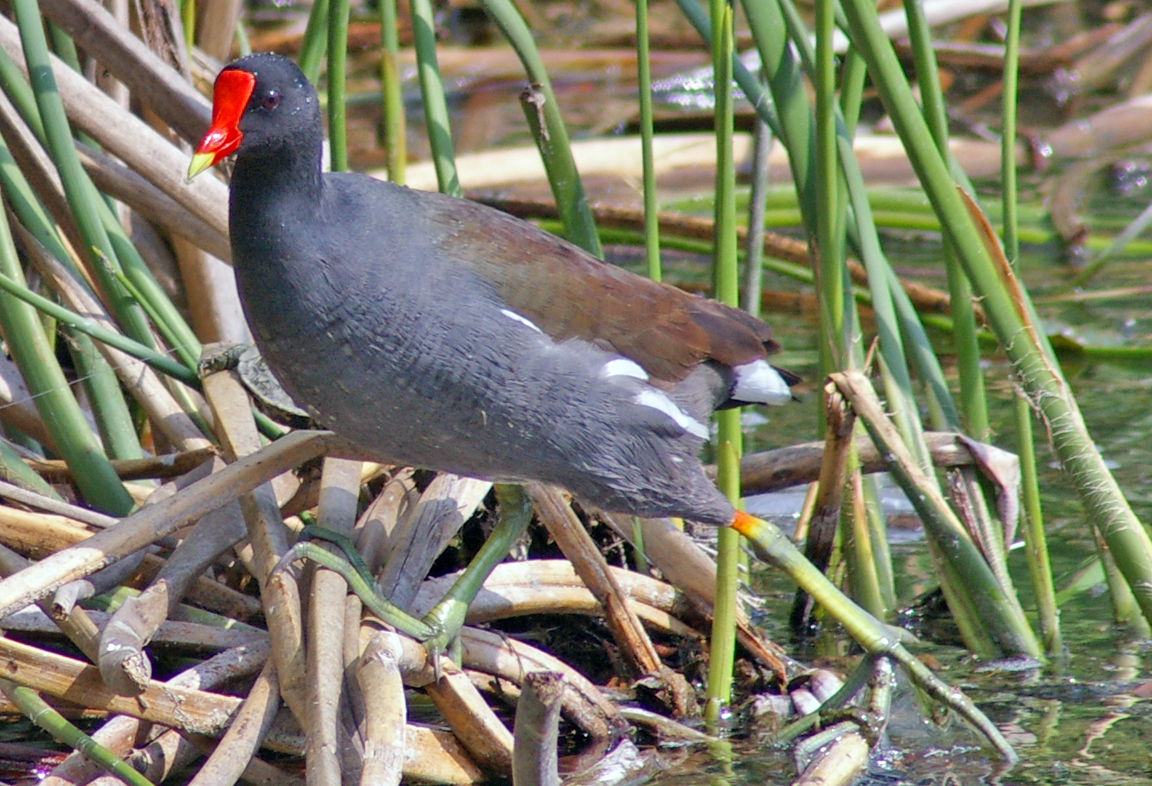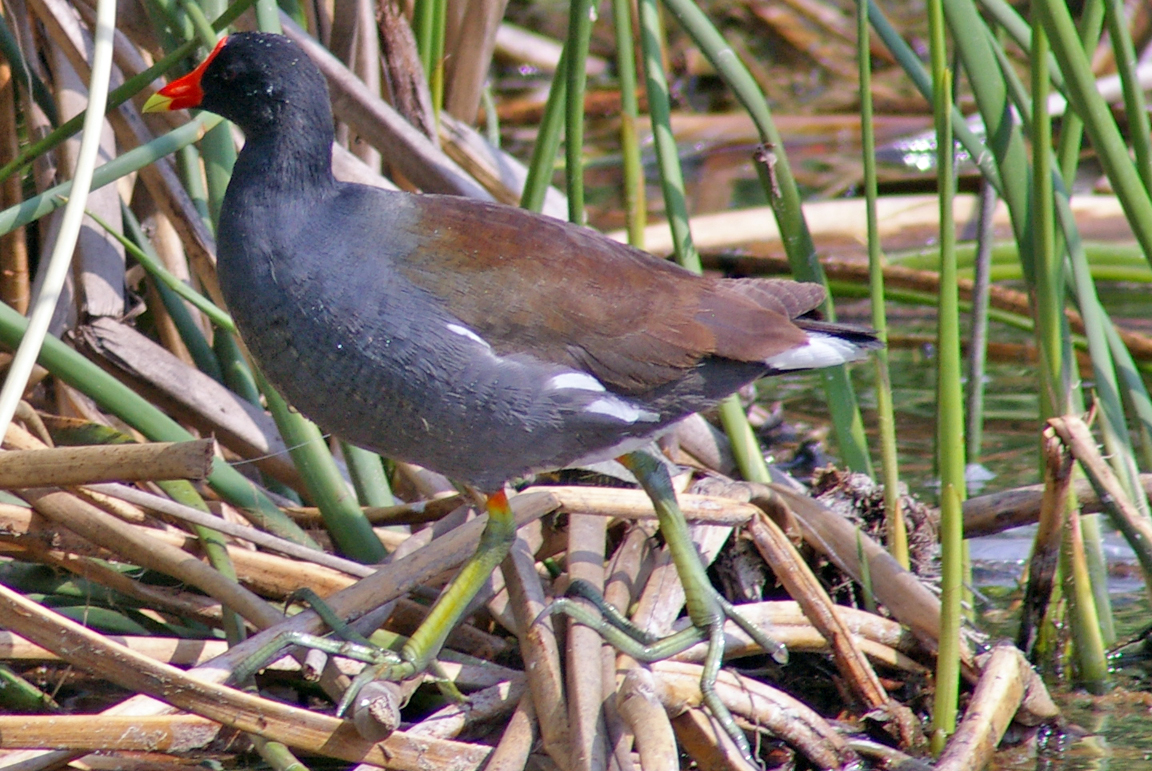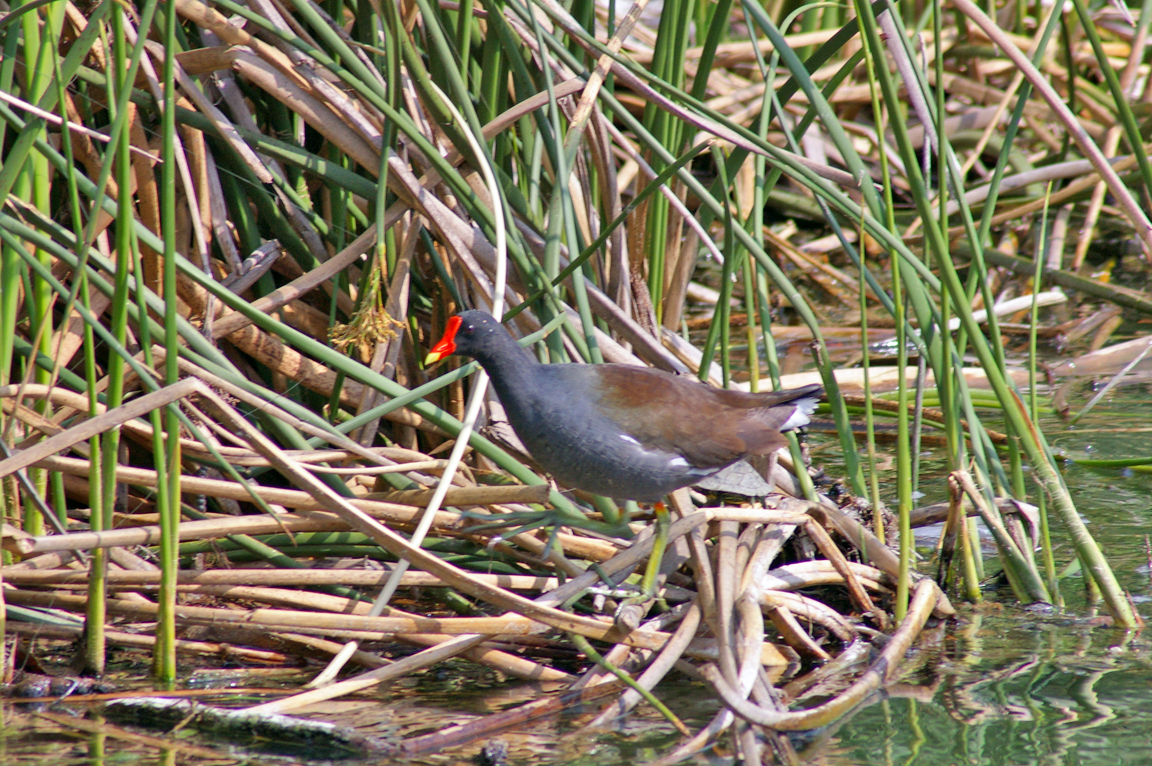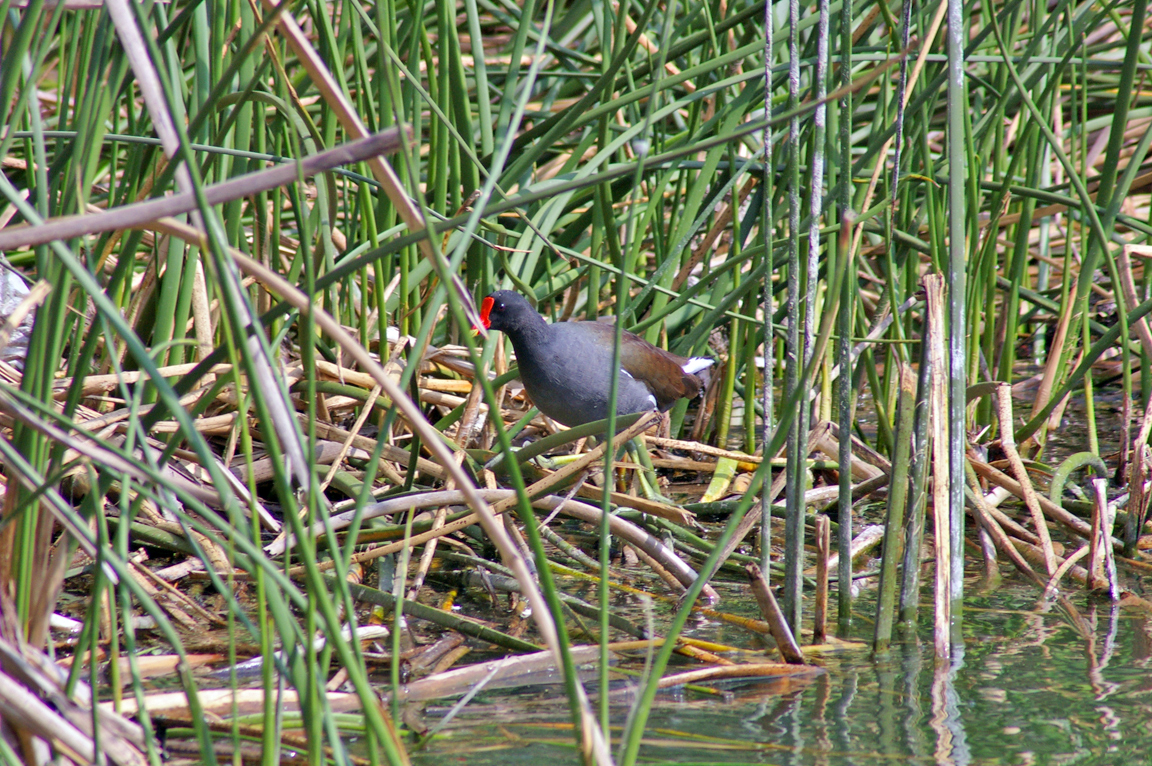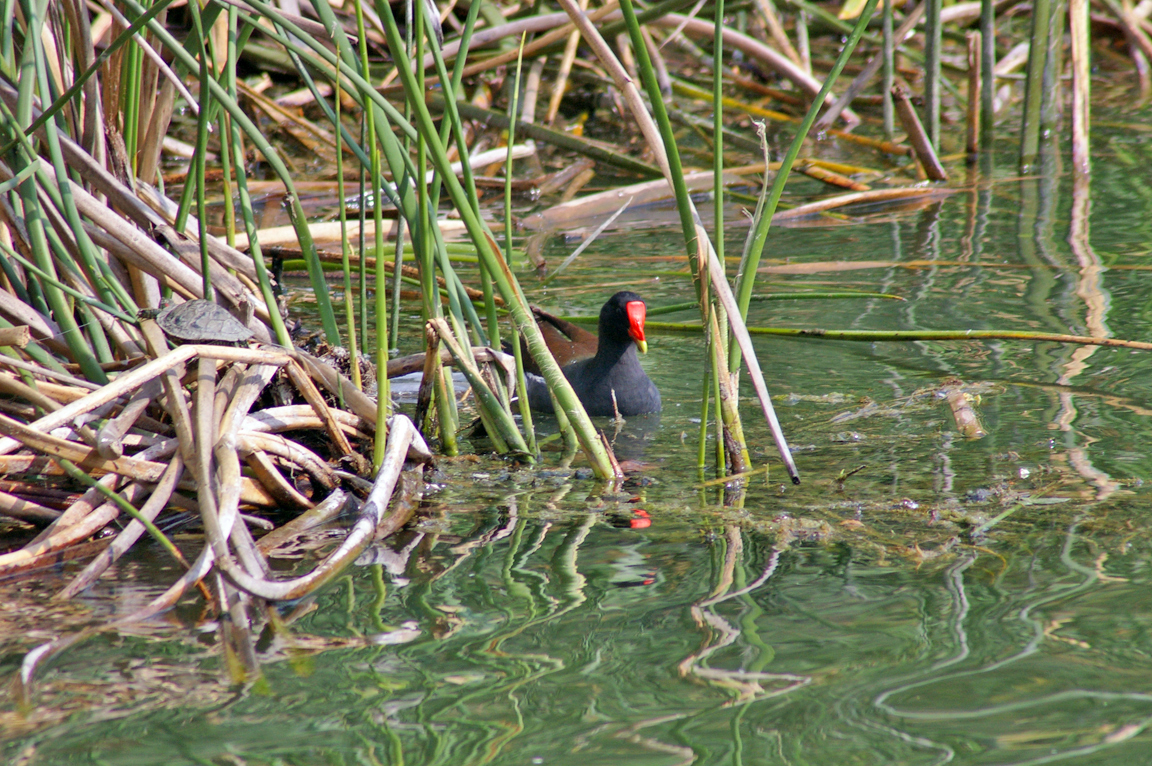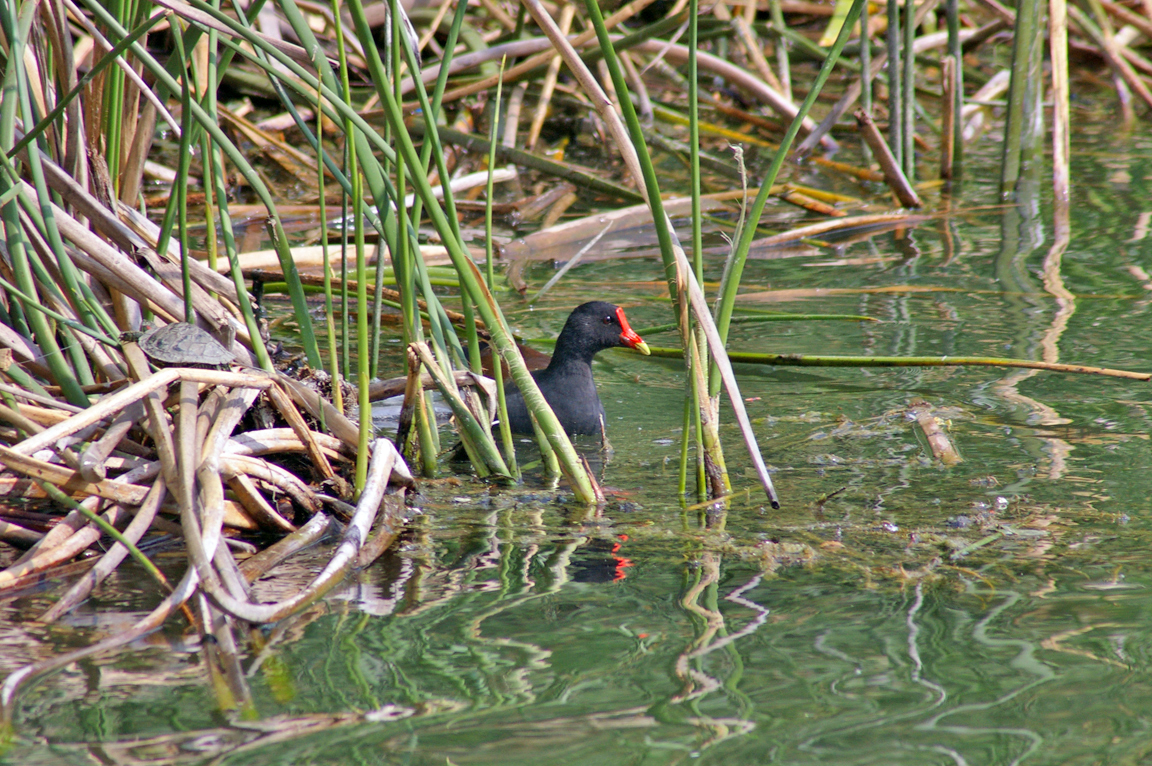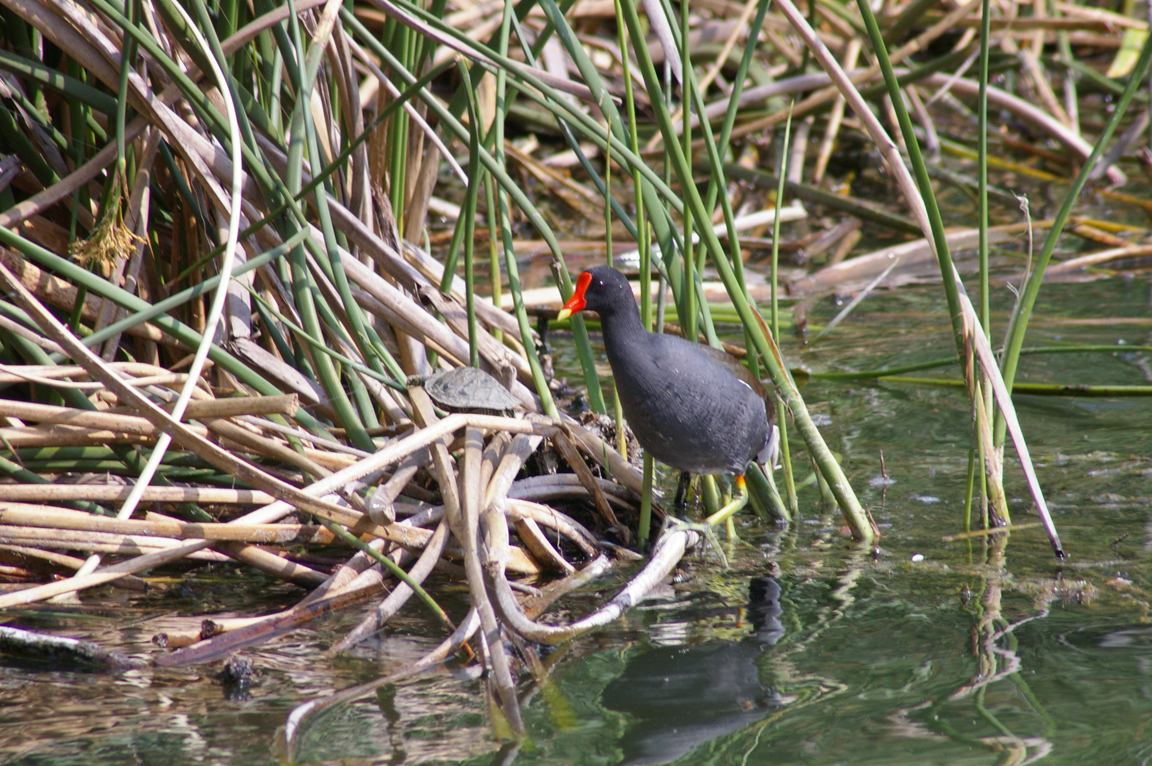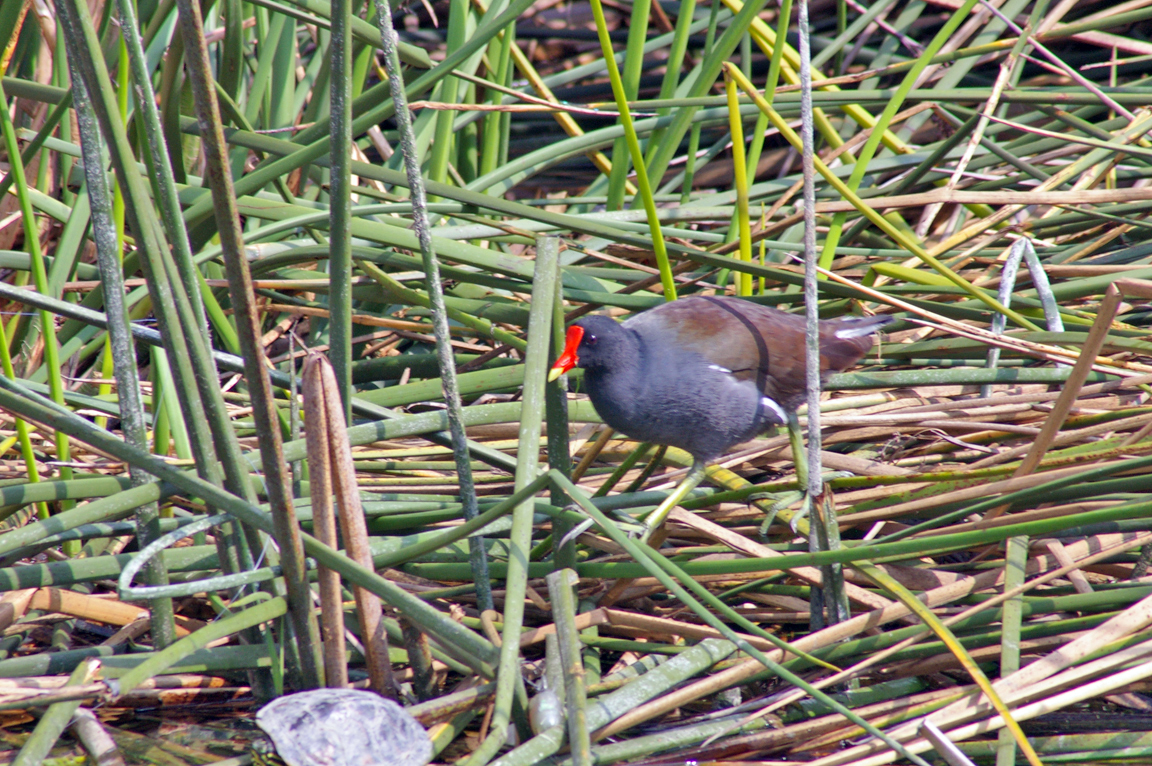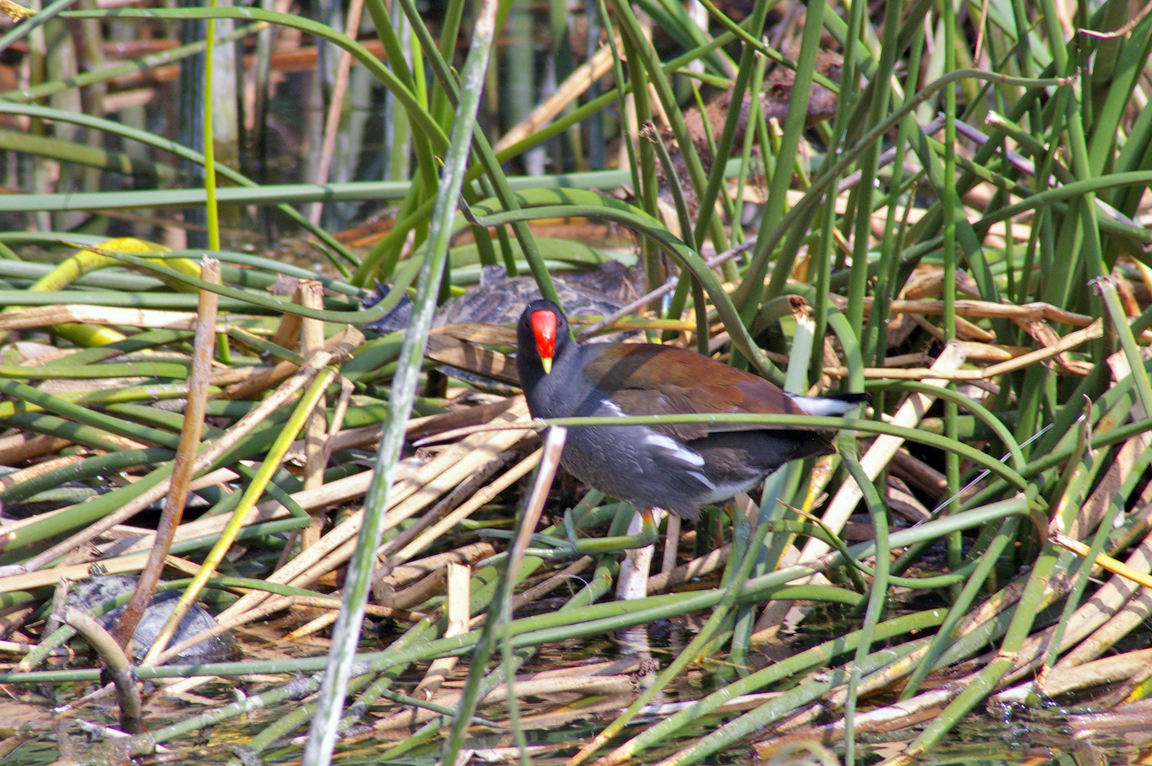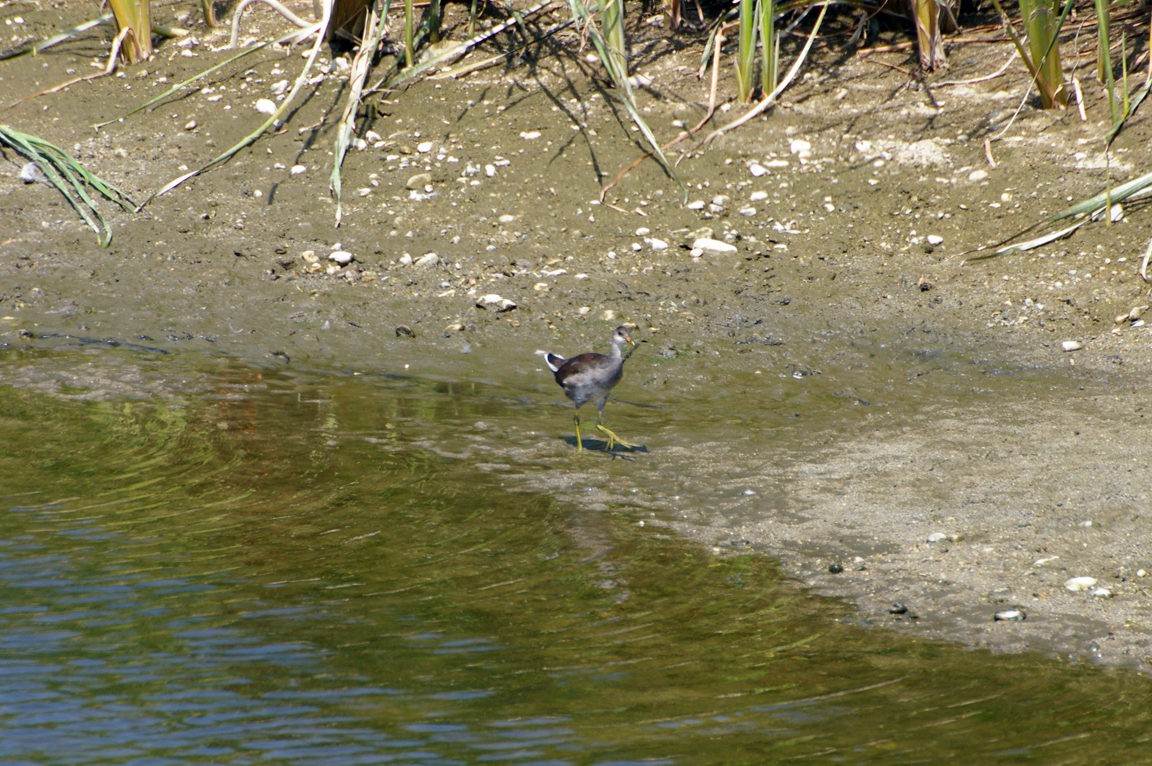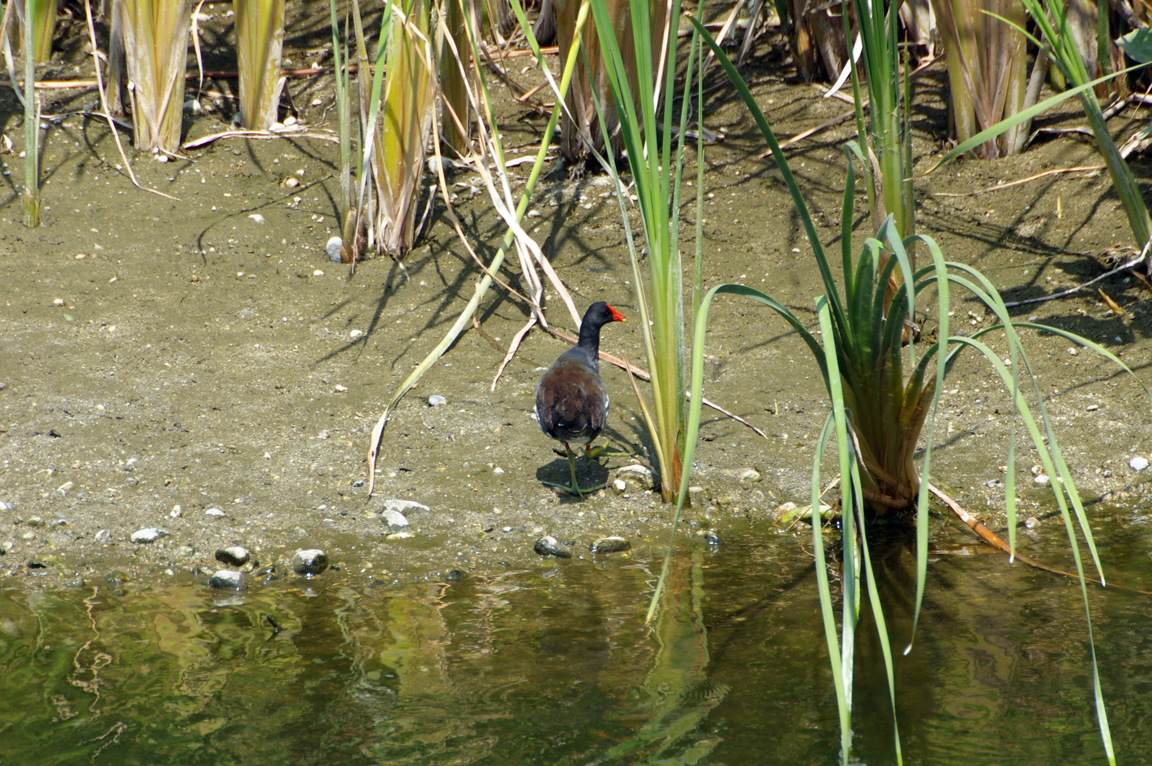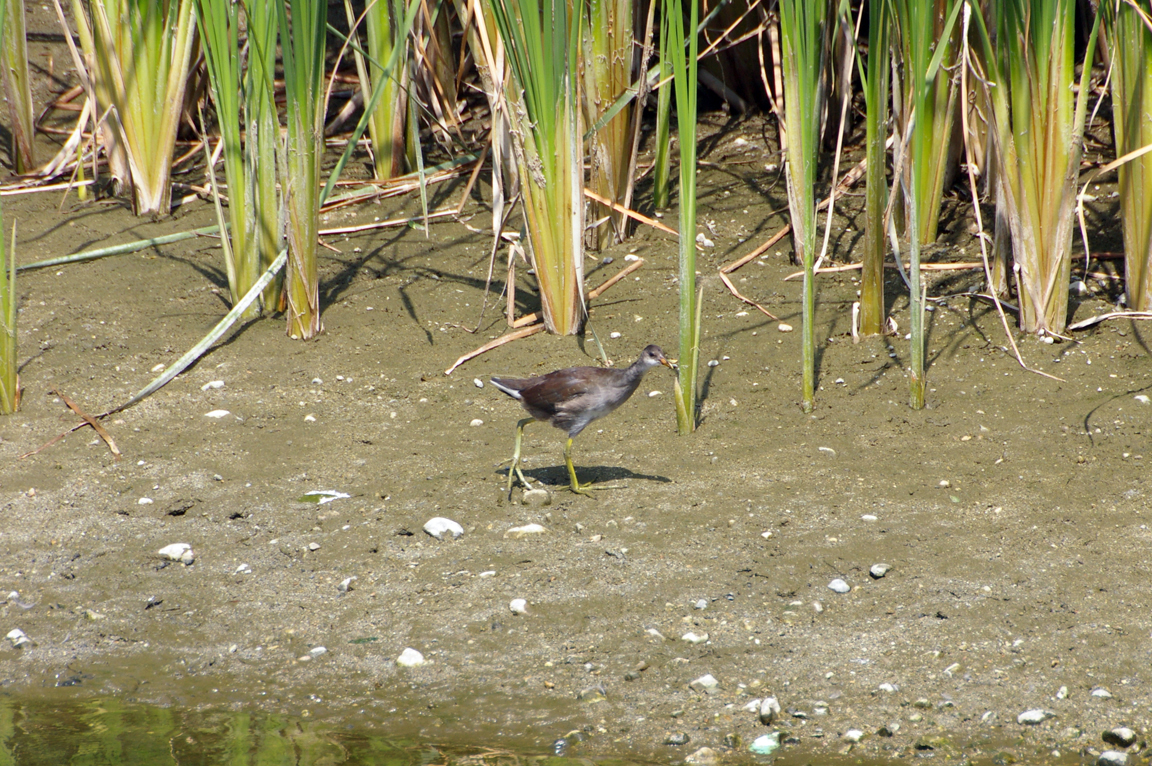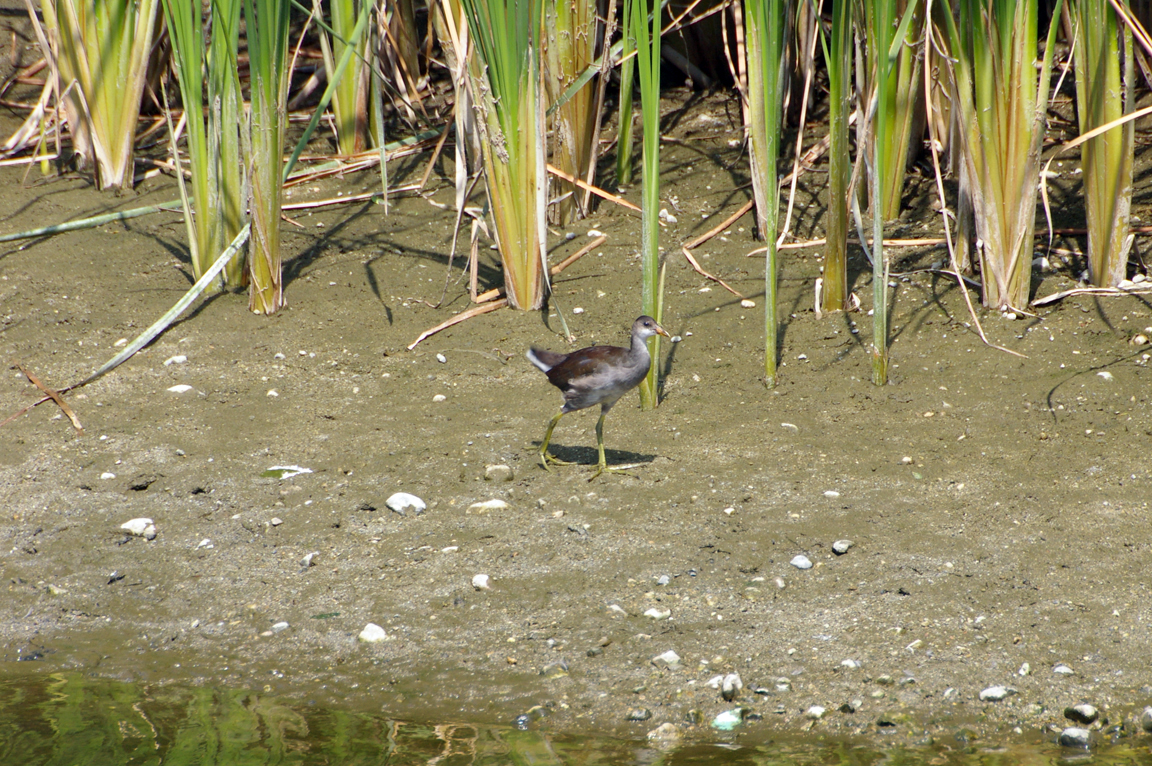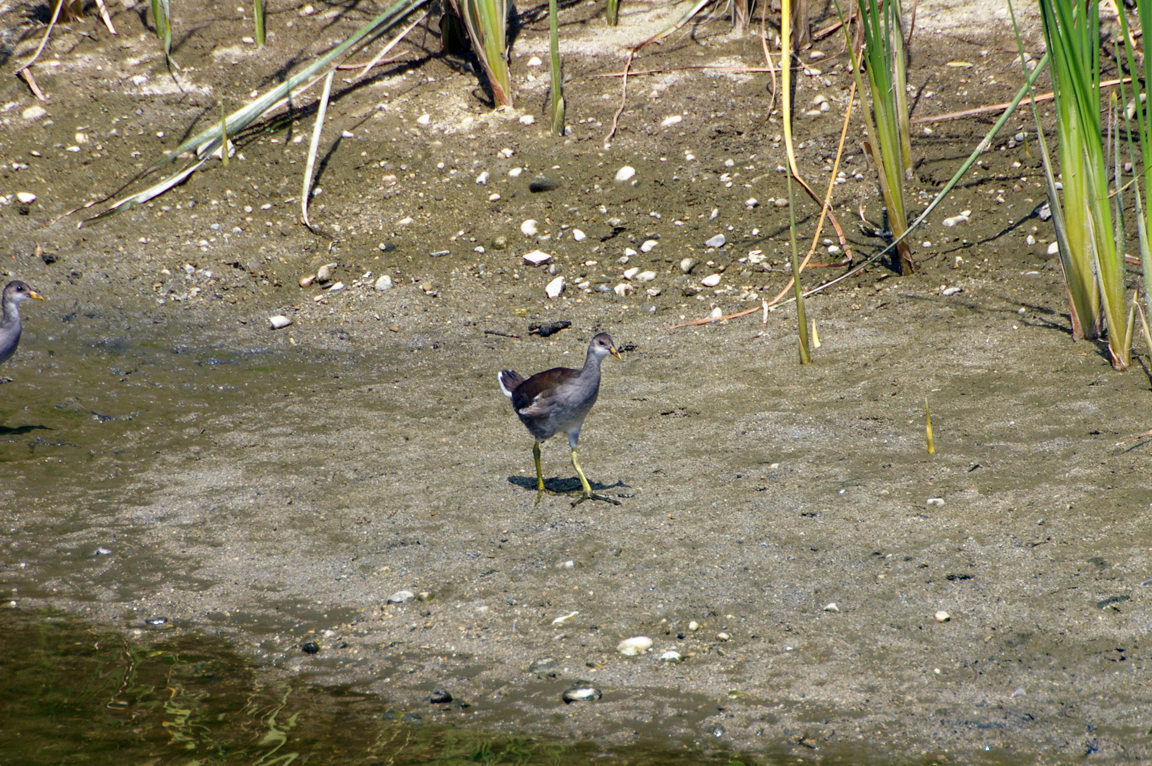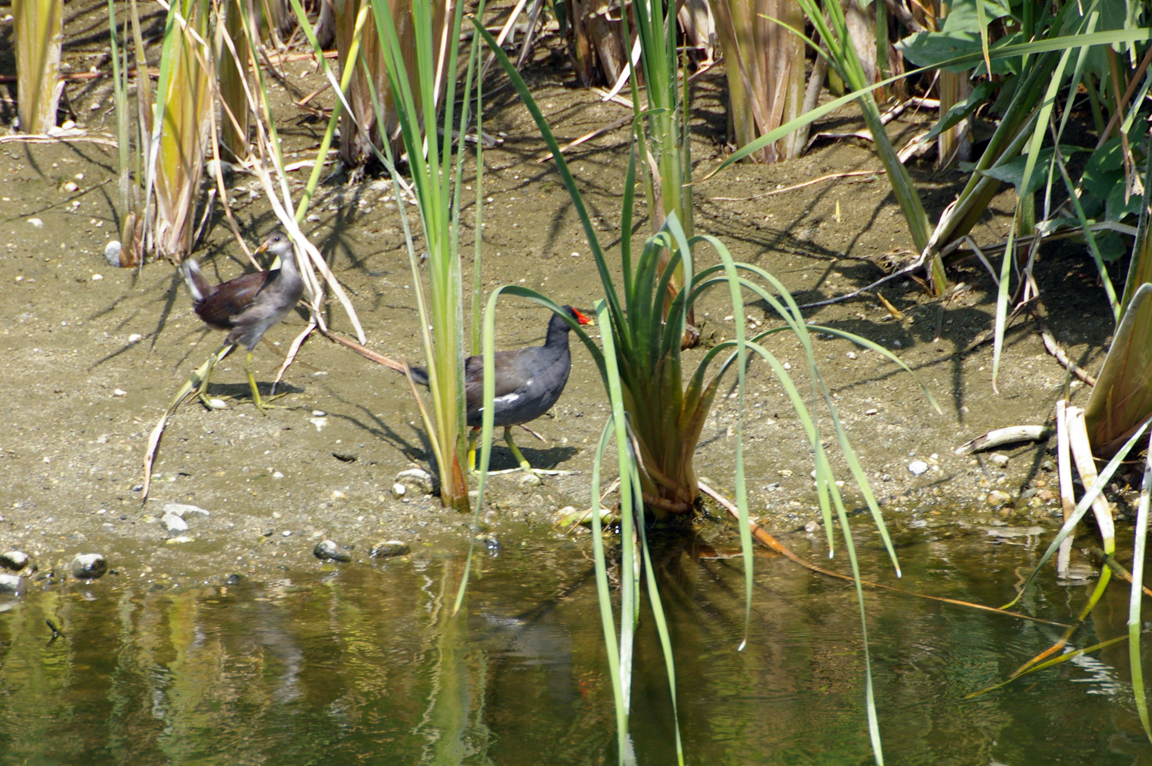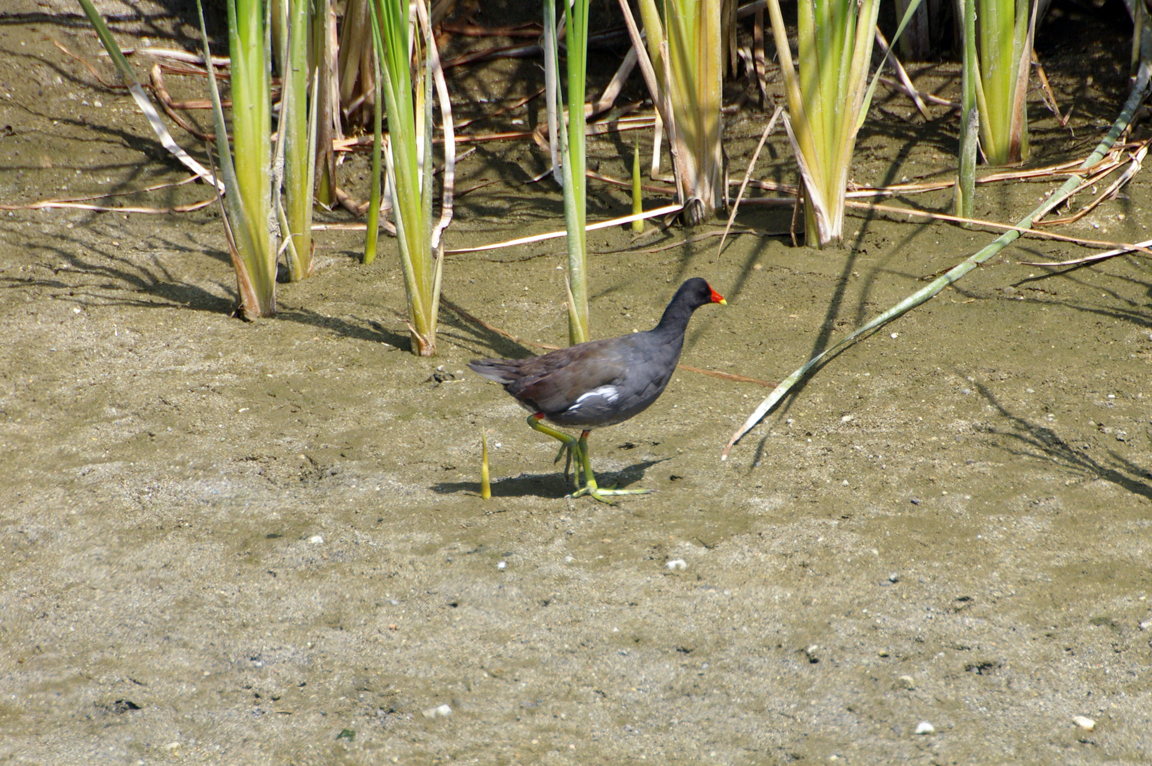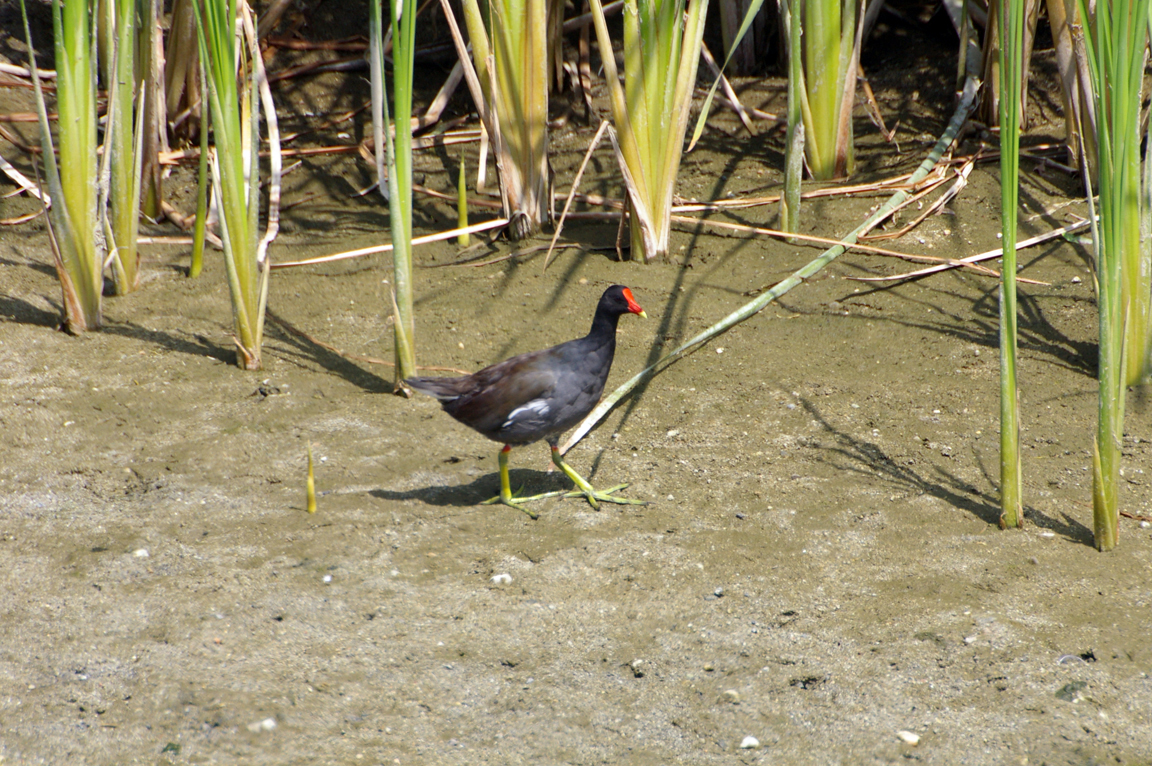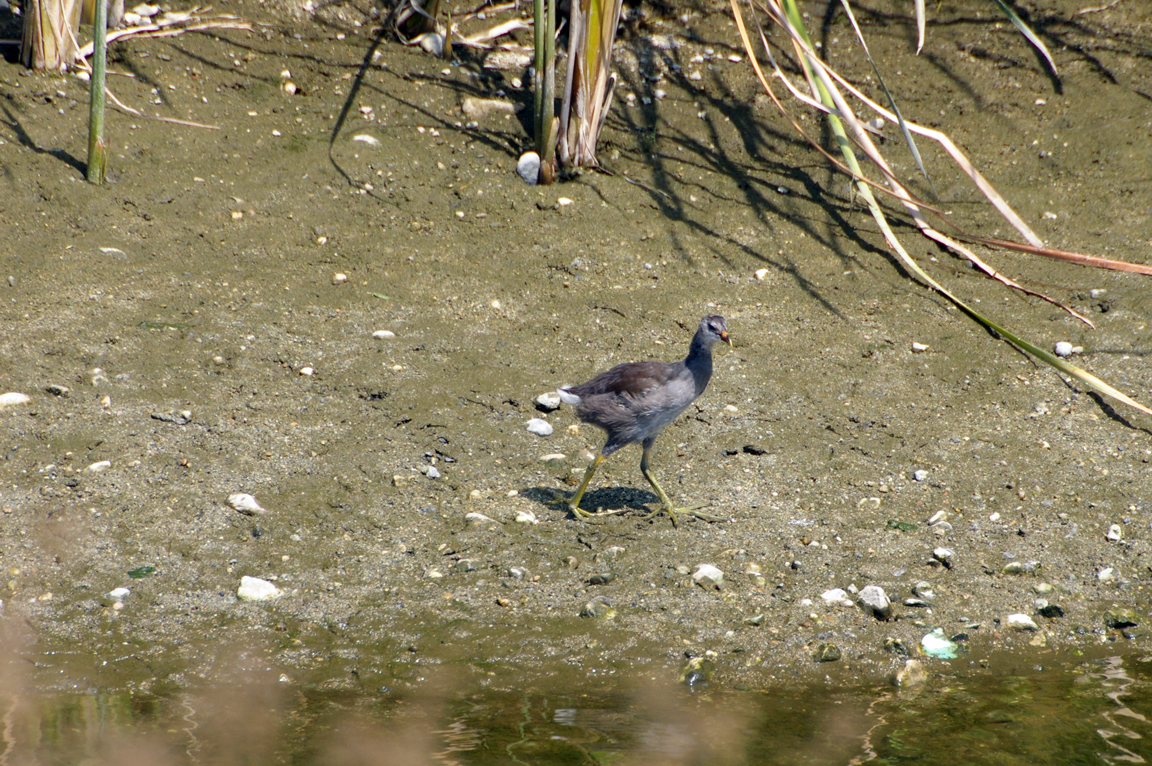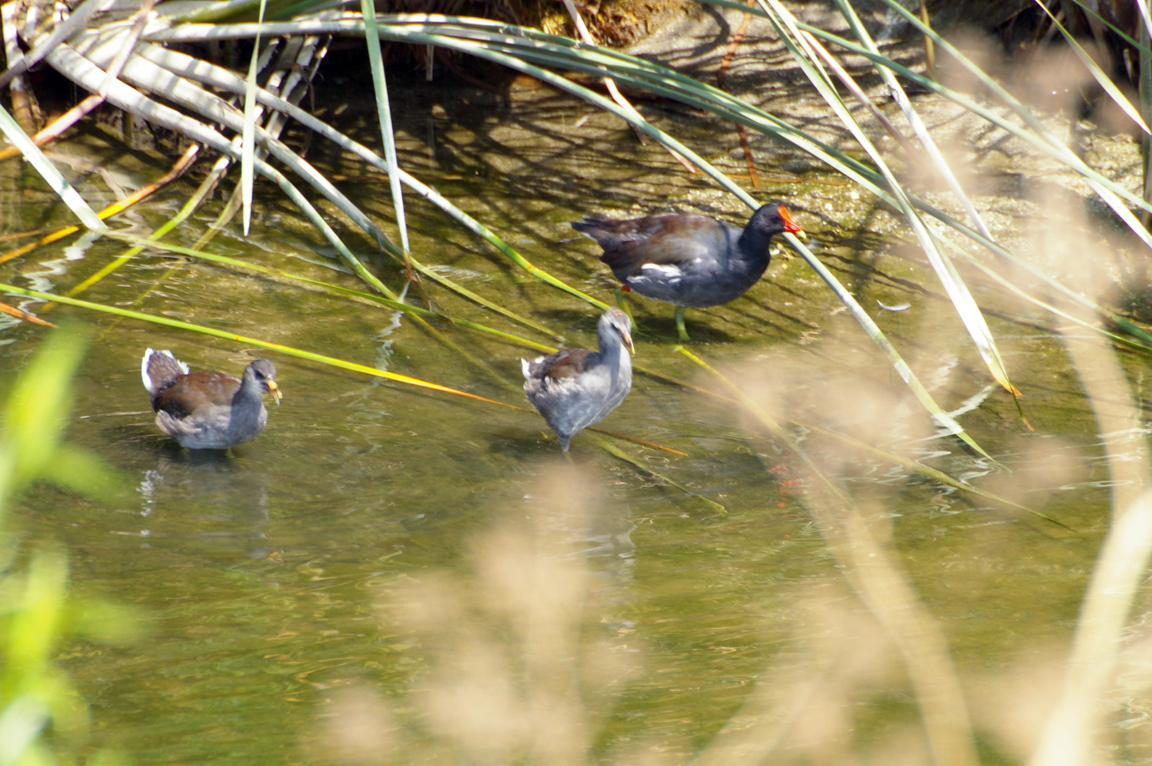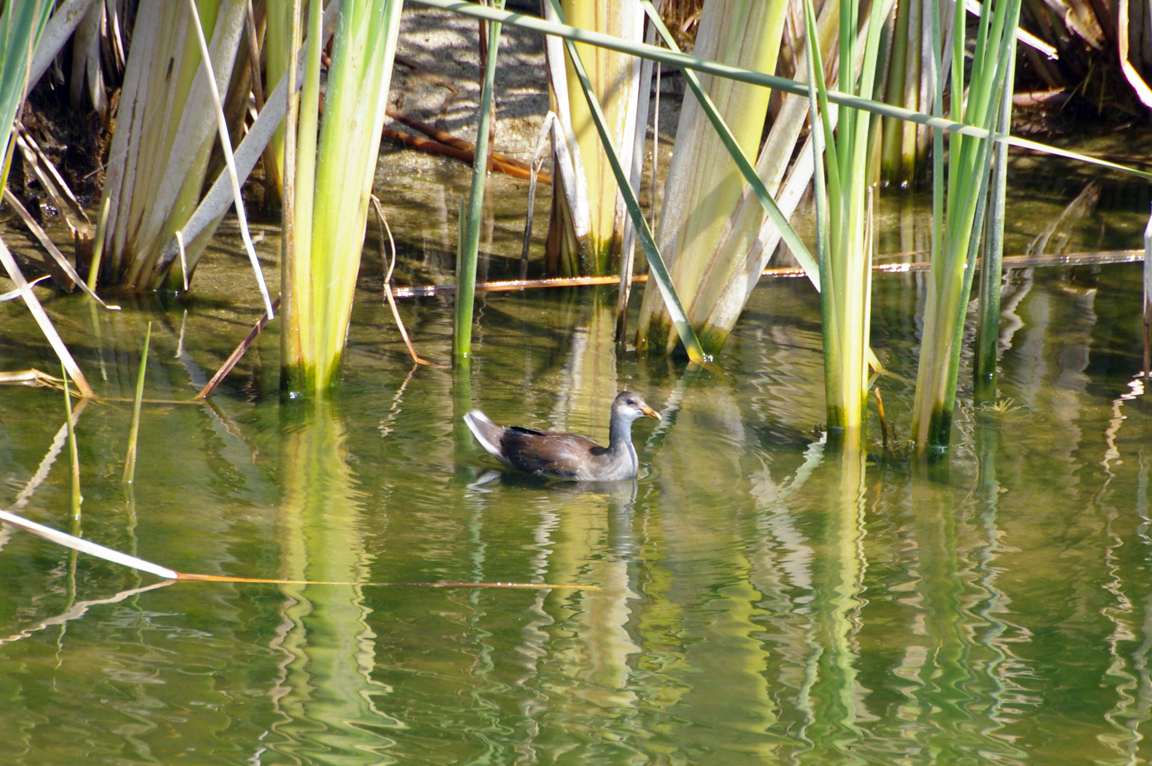|
|
|
 |
Common Moorhen
|
| Gallinula chloropus | |
The most widely distributed member of the rail family, the Common Moorhen inhabits marshes and ponds from Canada to Chile, from northern Europe to southern Africa, and across Asia to the Pacific. Vocal and boldly marked, the species can be quite conspicuous, sometimes using its long toes to walk atop floating vegetation.
Interesting Information
-
The Common Moorhen has long toes that makes it possible to walk on soft mud and floating vegetation. The toes have no lobes or webbing to help in swimming, but the moorhen is a good swimmer anyway.
-
The Common Moorhen sometimes lifts its feet out of the water in front of the body while swimming, perhaps to pass over vegetation.
-
Newly hatched chicks of the Common Moorhen have spurs on their wings that help them climb into the nest or grab emergent vegetation.
-
Twelve subspecies of Common Gallinule are recognized from around the world, most differing only in size or brightness of plumage. One subspecies is found only in the Hawaiian Islands and has been known as the Hawaiian Gallinule.
Description
Adult Description
-
Size: 32-35 cm (13-14 in)
-
Wingspan: 54-62 cm (21-24 in)
-
Weight: 310-456 g (10.94-16.1 ounces)
-
Dark, with white flank stripe.
-
Red bill and forehead.
-
Swims on surface of water like a duck.
-
Bill triangular like a chicken's, not flat like a duck's.
-
White stripe on sides of undertail.
Sex Differences
Sexes similar, male slightly larger.
Breeding (Alternate) Plumage:
Mostly blackish body, brown wings, and white flank stripe. Undertail white with a black line in middle. Forehead shield and bill bright red; bill with yellow tip. Legs olive-yellow. Ring of scarlet just below thigh feathers.
Nonbreeding (Basic) Plumage:
Chin, throat, and underparts paler than on breeding adult. Bill and forehead shield dusky red.
Immature
Juvenile brownish-gray with drab maroon bill and no frontal shield.
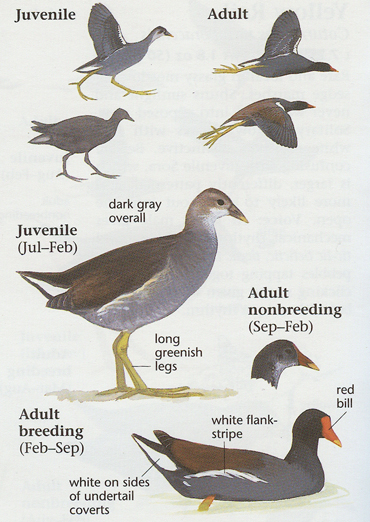
Photo taken from: The Sibley Field Guide by David Allen Sibley
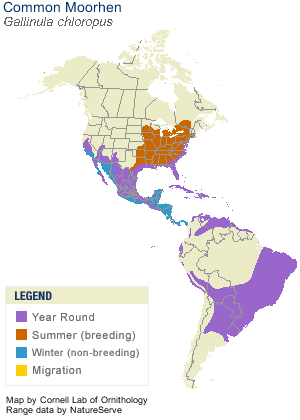
© 2003 Cornell Lab of Ornithology
|
Habitat |
|
Freshwater or brackish marshes with tall emergent vegetation, ponds, canals, and rice fields. |
|
Behavior |
|
Picks food from water surface or from emergent plants while walking or swimming. Dips head, dabbles, and occasionally dives. Flips floating leaves to take snails clinging to undersides. |
|
Food |
|
Seeds of grasses and sedges, and some snails. |
Taxonomy
| Kingdom: | Animalia |
| Phylum: | Chordata |
| Subphylum: | Vertebrata |
| Class: | Aves |
| Order: | Gruiformes |
| Family: | Rallidae |
| Genus: | Gallinula |
| Species: | Gallinula chloropus |
| Subspecies: | Gallinula chloropus barbadensis |
| Gallinula chloropus cachinnans | |
| Gallinula chloropus cerceris | |
| Gallinula chloropus chloropus | |
| Gallinula chloropus galeata | |
| Gallinula chloropus garmani | |
| Gallinula chloropus guami | |
| Gallinula chloropus meridionalis | |
| Gallinula chloropus orientalis | |
| Gallinula chloropus pauxilla |
Similar Species |
|
|
Bird Sound |
|
A highly varied repertoire of calls, including clucks, whinnies, cackles, squawks, and yelps. |
|
Eggs look like this |
|
Photo taken from: ARCTOS Collaborative Collection Management Solution |
Videos
Common Moorhen
Swimming
